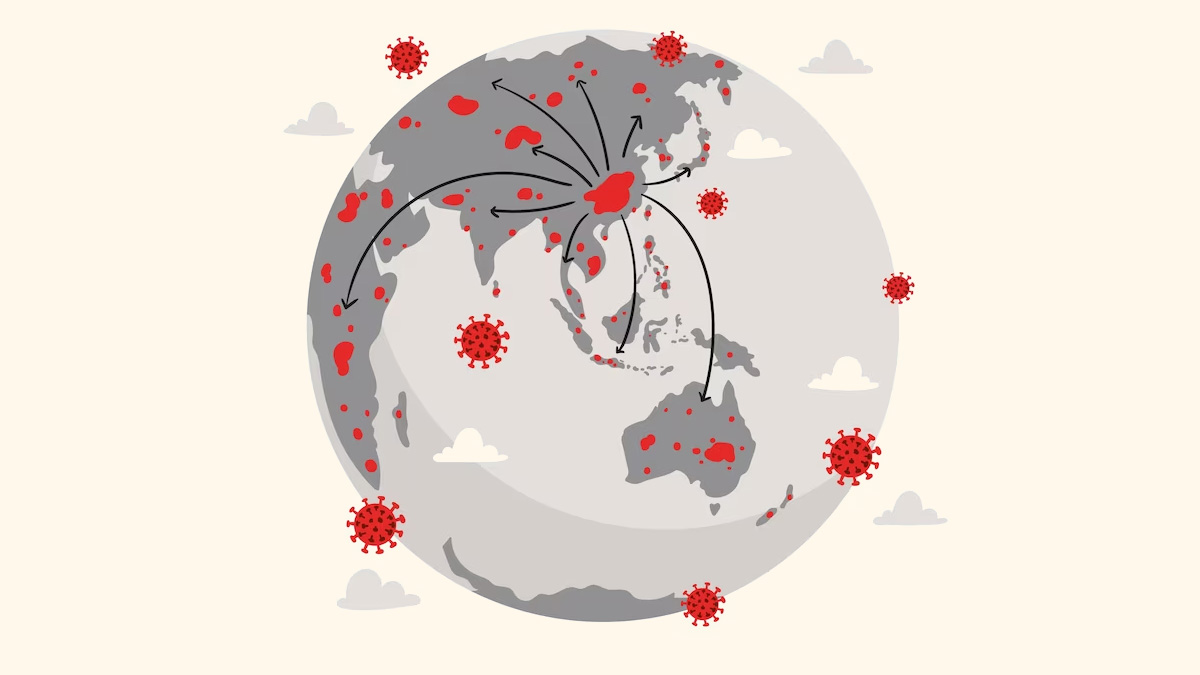
During the COVID-19 outbreak, one of the terms used frequently by scientists and doctors was epidemic disease. But do you know what this term means and the diseases that fall under it? To set a context, we must know that India has grappled with the recurring threat of epidemic diseases throughout its timeline. These diseases tend to affect us to date. Here's what you need to know about epidemic diseases.
Table of Content:-
What is an Epidemic Disease?
An epidemic disease is a sudden and widespread occurrence of a contagious disease in a particular geographic area, affecting a larger number of individuals than expected. According to the World Health Organization (WHO), several environmental elements play a pivotal role in the propagation of communicable diseases that have the potential to trigger epidemics.

Among these, the most crucial factors include:
- Water Supply
- Sanitation Facilities
- Food
- Climate
Also Read: Growing Epidemic of Liver Disease in India: Liver Functions and Importance
Major Epidemic Diseases
Let's understand some epidemic diseases with examples.
Cholera and Diarrhoeal Diseases
Cholera is a type of gastrointestinal infection, which is common during the monsoon season. As stated by Dr Monalisa Sahu, Infectious Diseases Consultant, Yashoda Hospitals in Hyderabad, it can arise from ingesting contaminated food and water containing disease-causing microorganisms.

She stated that individuals afflicted by this condition exhibit symptoms, such as high-grade fever, diarrhoea, queasiness, vomiting, abdominal pain, and overall fatigue. She added that the severity of symptoms can escalate and prove fatal for young and old people and pregnant women, due to substantial dehydration resulting from continuous fluid loss and insufficient hydration.
In cases of enteric fever, there's also the potential for intestinal perforation, a potentially fatal complication if not identified promptly, she recommended. You can combat cholera by improving water quality, promoting hygiene, and ensuring timely medical intervention.
Measles
According to Dr Archana Bashir Khan, Paediatric Consultant, Masina Hospital, Mumbai, measles is an infection caused by the morbillivirus and is distinguished by a significant rise in body temperature that manifests approximately 14 days after exposure to the virus.
She stated that this condition is accompanied by a rash, redness, and congestion in the eyes, the appearance of white spots within the cheeks (referred to as Koplik's spots), a runny nose, and a cough ranging from moderate to severe. Although the fever might abate 1-2 days after the rash emerges, the individual remains contagious and continues to transmit the virus even after the fever diminishes.

Also Read: Measles Vs Rubella: What Is The Difference Between These Viral Diseases
The virus can spread through coughing and sneezing, making crowded areas and unvaccinated populations particularly vulnerable. While vaccines have proven effective in controlling measles, gaps in immunisation coverage have led to periodic outbreaks.
Malaria
Malaria, transmitted through the bite of infected mosquitoes, is another epidemic disease that India grapples with time and again. As outlined in a research paper featured in The Journal of Climate Change and Health, malaria cases display seasonal trends, with a heightened occurrence during the monsoon months. Nevertheless, the transmission of the disease can transpire throughout the year, rather than being confined to specific periods.
Dr Sahu said that individuals who experience complications arising from malaria exhibit a range of symptoms, including elevated fevers, intense headaches, altered mental states, discoloured urine, severe anaemia, and bleeding from various areas.

She emphasised that malaria can be effectively treated with anti-malarial medications. However, when complications arise, especially among susceptible groups, such as infants, children, pregnant women, the elderly, and those with compromised immune systems, the management becomes challenging and the outcomes occasionally turn adverse.
Dengue Fever
Like malaria, dengue is another epidemic disease, which is transmitted through the bite of infected mosquitoes. According to a report by the WHO concerning Asian countries, instances of dengue tend to rise during the wet season. Dr Sahu contributed to this by stating that individuals suffering from dengue can manifest symptoms, such as fever, a rash, muscle pain, pain behind the eyes, and a headache.
"Some individuals progress to a more severe stage known as dengue haemorrhagic fever, which can manifest as bleeding from various locations, intense abdominal pain, profound headaches, changes in mental state, dengue myocarditis, as well as a significant reduction in platelet count," she included.
"Often, managing cases of severe dengue haemorrhagic fever proves to be complex, necessitating vigilant monitoring and intensive critical care assistance, involving multiple transfusions and other forms of supportive treatment," the doctor elaborated.
[Disclaimer: This article is for informational purposes only. Consult your healthcare provider to get a thorough diagnosis and treatment as per your health needs.]
Image Credits: freepik
Also watch this video
How we keep this article up to date:
We work with experts and keep a close eye on the latest in health and wellness. Whenever there is a new research or helpful information, we update our articles with accurate and useful advice.
Current Version